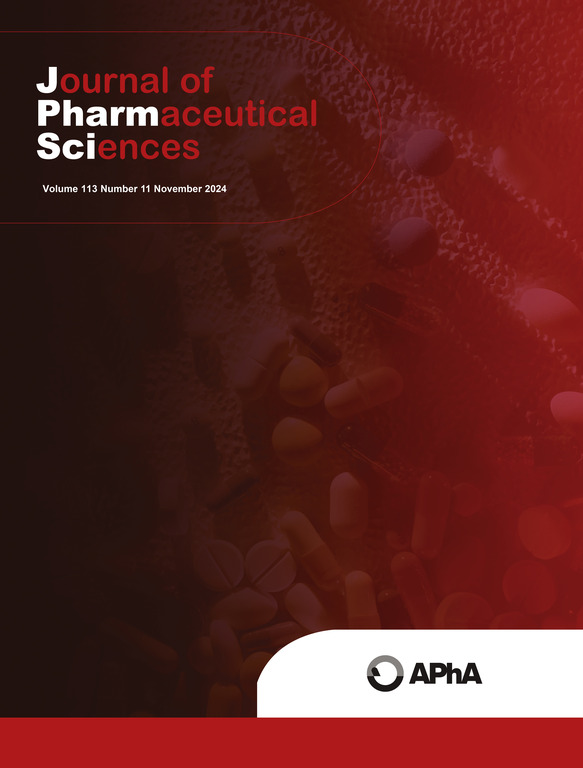Injectability of high concentrated suspensions using model microparticles
IF 3.8
3区 医学
Q2 CHEMISTRY, MEDICINAL
引用次数: 0
Abstract
Administration of high-concentrated suspension formulations (i.e., solid particles dispersed in a liquid vehicle) can be limited due to their greater propensity for needle occlusion. The physical interaction between the solid phase (i.e., particles), the vehicle (i.e., flow field), and injection devices could result in the formation of particle bridging or filtering, posing a major risk in dose delivery accuracy and injectability. Here, given the limited understanding on how clogging initiates in syringe and needle delivery systems, we report an experimental approach to fully characterize the transient injection behavior of suspensions. In particular, we first established a custom fluorescence tagging and imaging technique with integrated force sensor to enable visual observation of local particle concentrations and plunger force monitoring throughout injection. Then, we investigated the effects of key formulation properties and device parameters including particle concentration and morphology, carrier viscosity, injection rate, needle and syringe sizes, and tissue backpressure on the incidence of suspension particle jamming and needle clogging. We performed systematic benchmark studies demonstrating that increasing needle inner diameter (ID) and particle density considerably reduced clogging risk, while increasing vehicle viscosity, particle size, and tissue backpressure significantly increased clogging. The experimental framework presented is amenable to quantifying clogging risk in drug-loaded particle suspensions and provides a guideline to make informed decisions on the tradeoffs between creating particles for pharmaceutical impact and feasibility of injection delivery.
使用模型微粒研究高浓度悬浮液的可注射性。
高浓度悬浮制剂(即分散在液体载体中的固体颗粒)的给药可能会受到限制,因为它们更容易发生针头堵塞。固相(即颗粒)、载体(即流场)和注射装置之间的物理相互作用可能会导致颗粒架桥或过滤的形成,从而对剂量输送的准确性和可注射性构成重大风险。鉴于对注射器和针头给药系统中堵塞是如何产生的了解有限,我们在此报告一种实验方法,以全面描述悬浮液的瞬态注射行为。特别是,我们首先建立了一种带有集成力传感器的定制荧光标记和成像技术,以便在整个注射过程中对局部颗粒浓度和柱塞力进行可视化观察和监测。然后,我们研究了关键配方特性和设备参数(包括颗粒浓度和形态、载体粘度、注射速度、针头和注射器尺寸以及组织背压)对悬浮颗粒堵塞和针头堵塞发生率的影响。我们进行的系统基准研究表明,增加针头内径(ID)和颗粒密度可大大降低堵塞风险,而增加载体粘度、颗粒大小和组织背压则会显著增加堵塞风险。我们提出的实验框架适用于量化载药颗粒悬浮液的堵塞风险,并为在制作颗粒的制药效果和注射输送的可行性之间做出明智决策提供了指导。
本文章由计算机程序翻译,如有差异,请以英文原文为准。
求助全文
约1分钟内获得全文
求助全文
来源期刊
CiteScore
7.30
自引率
13.20%
发文量
367
审稿时长
33 days
期刊介绍:
The Journal of Pharmaceutical Sciences will publish original research papers, original research notes, invited topical reviews (including Minireviews), and editorial commentary and news. The area of focus shall be concepts in basic pharmaceutical science and such topics as chemical processing of pharmaceuticals, including crystallization, lyophilization, chemical stability of drugs, pharmacokinetics, biopharmaceutics, pharmacodynamics, pro-drug developments, metabolic disposition of bioactive agents, dosage form design, protein-peptide chemistry and biotechnology specifically as these relate to pharmaceutical technology, and targeted drug delivery.

 求助内容:
求助内容: 应助结果提醒方式:
应助结果提醒方式:


